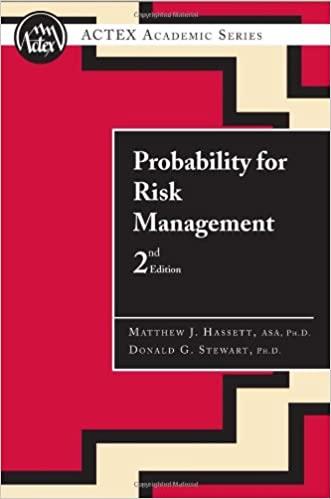Question
Just need to answer part a b c and d need this in 2 hours will leave upvote Recent geopolitical events and the ongoing effects
Just need to answer part a b c and d need this in 2 hours will leave upvote
Recent geopolitical events and the ongoing effects of the Covid19 pandemic have seen large swings in commodity prices in recent years, particularly in oil and gas prices. Unsurprisingly, many of your clients are trying to understand these markets and your first task, should you choose to accept it, is to analyse the current crude oil and natural gas markets and their forward curves. Such forward curves provide important information about market conditions for traders and investors. Prices for NYMEX Henry Hub Natural Gas futures and NYMEX WTI light sweet crude oil futures contracts (both traded on CME) are presented in Table 1 below. In particular, futures contracts expiring up to July 2024 are provided. We also know that on 19 July 2022 the spot price of natural gas was USD7.531 per MMBtu (one million British thermal units) and the spot price of light crude oil was USD103.45 per barrel.
(a) First, a client asks you to plot the forward curves (as of 19 July 2022) for both the NYMEX Henry Hub Natural Gas futures and the NYMEX WTI light sweet crude oil futures contracts. You should plot these on the same set of axis with timetodelivery on the xaxis rather than the delivery date itself. So you can compare, you should also scale the futures prices
by the current spot price, so that both forward curves start at 100 at timetodelivery equals zero. For simplicity you should assume that the timetodelivery is rounded off to the nearest month; e.g. 1 month for Aug 22 contracts, 2 months for Sep 22 contracts.
(b) Provide an explanation of the patterns of each forward curve and discuss any differences/similarities between them. News announcements and online articles on economic market conditions that may have had an impact should be used to support your discussion.
Another client is particularly interested in analysing the convenience yields implied in the gas and oil futures prices. In the following, you should assume that, on 19 July 2022, the monthly storage cost was estimated at USD0.55 per barrel for crude oil and at USD0.04 per MMBtu for natural gas, both payable in advance each month. You should also assume that the yield curve is flat and the riskfree rate is 3.7% per annum with continuous compounding.
(c) Using the futures price data on 19 July 2022 in Table 1, calculate the convenience yield of crude oil and natural gas implied by each futures contract from August 2022 to July 2024 (i.e., 24 numbers in total). Again, please round off the timetodelivery to the nearest month. Plot these implied convenience yields with the timetodelivery on the xaxis (one curve for each commodity).
(d) Comment on any patterns you observe in the convenience yields calculated in part (c) and explain to your client what the convenience yield is and what it tells us about the current oil and gas market. You might want to reflect on the current market conditions and/or the current forward curve in your discussion. Again, news announcements and online articles can be used to support your discussion.
Next, a small oil and gas producer located in Texas, USA has estimated that it will have approximately 2,000,000 barrels of crude oil and 800,000 MMBtu of natural gas ready for sale sometime around midOctober 2022. Naturally, given the volatility in the market, they are concerned that prices will fall before then and so they are considering locking in a selling price for their oil and gas now using the NYMEX futures contracts analysed above. They have approached you and your company to advise them on the hedge. Assume that today is 19 July 2022 and that you have estimated the following standard deviations of price changes: Standard deviation of price changes Spot crude oil 0.457 Crude oil futures 0.424 Spot natural gas 0.510 Natural gas futures 0.576 The correlation coefficient between the spot and futures price changes has also been estimated to be 0.915 and 0.842 for oil and natural gas, respectively.
(e) Calculate the optimal number of futures contracts required (by tailing the hedge) and recommend an effective hedge for the oil and gas producer. Use the appropriate futures contracts from Table 1 and recall that one NYMEX WTI light sweet crude oil futures contract is written on 1,000 barrels of oil and one NYMEX Henry Hub Natural Gas futures contract is written on 10,000 MMBtu.1
Finally, assume that the oil and gas producer is ready to sell their crude oil and natural gas in midOctober. At this time, the crude oil and natural gas spot prices have changed to USD92.50 per barrel and USD8.250 per MMBtu, respectively, and the futures prices for delivery in one month are USD91.42 per barrel and USD8.124 per MMBtu, respectively.
(f) Calculate the outcome with and without the hedge. What is the producers effective selling price with and without the hedge? Did they benefit from this hedge?
(g) Explain the main objective of the recommended hedge and the reasons why it cannot be a perfect hedge.
Step by Step Solution
There are 3 Steps involved in it
Step: 1

Get Instant Access to Expert-Tailored Solutions
See step-by-step solutions with expert insights and AI powered tools for academic success
Step: 2

Step: 3

Ace Your Homework with AI
Get the answers you need in no time with our AI-driven, step-by-step assistance
Get Started


